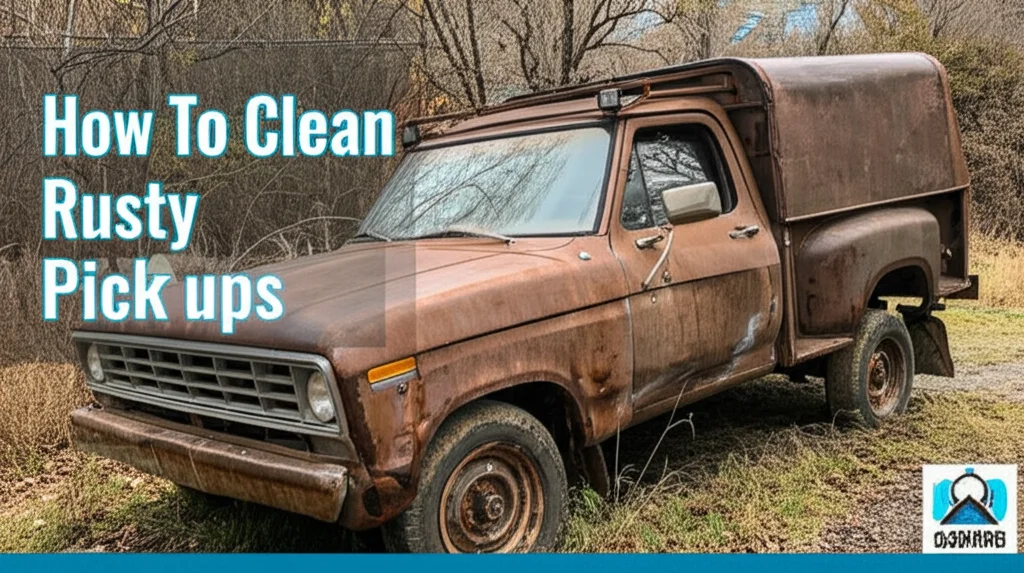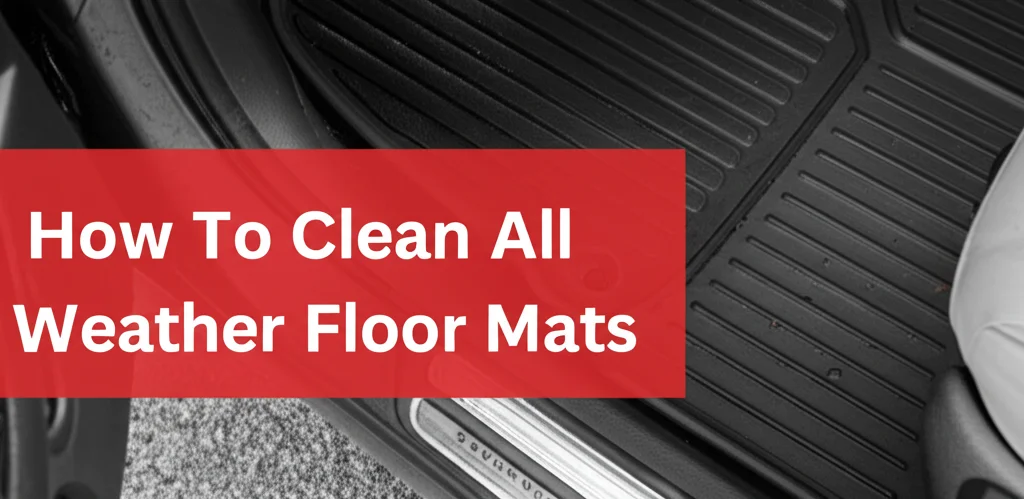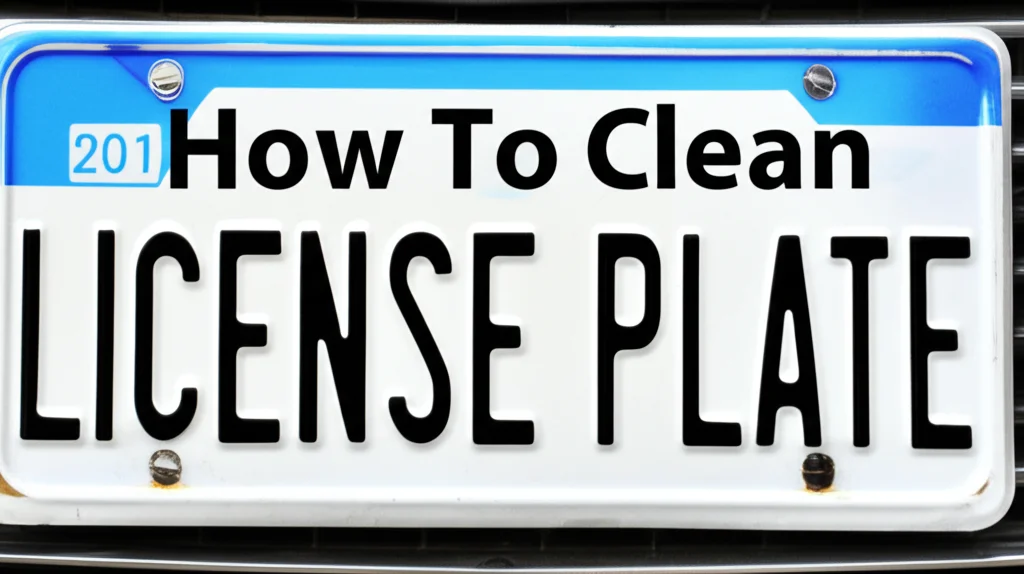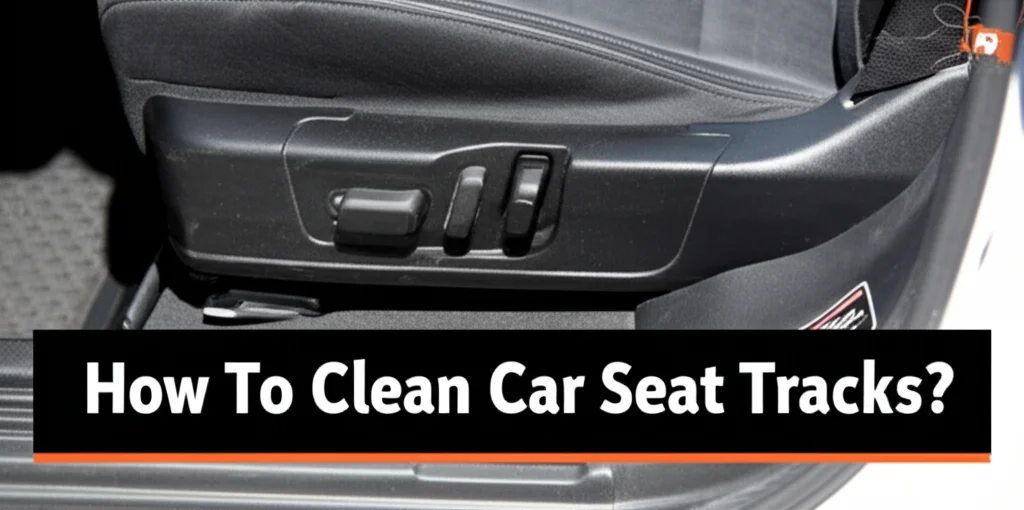· Auto Detailing · 6 min read
How To Clean Rusty Pickups

Revitalize Your Ride: How To Clean Rusty Pickups
Is rust starting to take over your beloved pickup truck? Don’t worry, you’re not alone! Many pickup owners face the challenge of rust, especially in areas prone to harsh weather or road salt. Cleaning rusty pickups doesn’t have to be a daunting task. This guide will walk you through effective methods to remove rust, protect your truck, and restore its appearance. We’ll cover everything from simple DIY solutions to when it’s time to call in the professionals. Let’s get started and bring back the shine to your pickup!
Takeaway:
- Identify the rust severity to choose the right cleaning method.
- Use a combination of cleaning, rust removal, and protective treatments.
- Regular maintenance is key to preventing future rust formation.
Quick Answer:
Cleaning rusty pickups involves removing the rust with solutions like vinegar, baking soda, or commercial rust removers, followed by scrubbing and rinsing. Protecting the metal with primer and paint is crucial to prevent future corrosion.
Understanding Rust on Your Pickup Truck
Rust forms when iron in the metal reacts with oxygen and moisture. Pickups are particularly susceptible due to their exposure to the elements and frequent use for hauling. Understanding the different types of rust will help you choose the best cleaning approach. Surface rust is a light coating that’s relatively easy to remove. Deeper, penetrating rust can cause structural damage and requires more intensive treatment.
Where Rust Commonly Appears
Knowing where to look for rust can help you catch it early. Common areas on pickups include:
- Wheel wells: Constantly exposed to road spray and debris.
- Underbody: Vulnerable to salt and moisture.
- Bed rails: Scratches and chips provide entry points for rust.
- Body panels: Especially around seams and edges.
- Bumpers: Prone to impacts and chipping.
DIY Rust Removal Methods for Light Rust
For minor surface rust, you can often achieve excellent results with readily available household items. These methods are cost-effective and environmentally friendly. Remember to always test any cleaning solution in an inconspicuous area first.
Vinegar Power
White vinegar is a mild acid that can dissolve rust. Soak a cloth in vinegar and apply it to the rusted area for several hours. Then, scrub with a stiff brush and rinse thoroughly with water. This method works best on light surface rust. You can also create a vinegar paste with baking soda for added abrasive power.
Baking Soda Paste
Baking soda is a gentle abrasive that can help lift rust. Mix baking soda with water to form a paste and apply it to the rusted area. Let it sit for about an hour, then scrub with a brush and rinse. This is a good option for smaller areas or delicate surfaces. For tougher rust, you can add a little lemon juice to the paste.
Commercial Rust Removers: A Step Up in Cleaning
When DIY methods aren’t enough, commercial rust removers offer a more powerful solution. These products contain chemicals specifically designed to dissolve rust quickly and effectively. Always follow the manufacturer’s instructions carefully and wear appropriate safety gear.
Types of Rust Removers
There are several types of commercial rust removers available:
- Chemical rust converters: These convert rust into a stable, paintable surface.
- Rust dissolving gels: These dissolve rust on contact.
- Rust removal sprays: Convenient for hard-to-reach areas.
Application and Safety
Before applying any rust remover, clean the area with soap and water. Apply the remover according to the instructions, allowing it to sit for the recommended time. Wear gloves, eye protection, and a mask to protect yourself from fumes and chemicals. After removing the rust, rinse the area thoroughly with water. You can find more information on safe cleaning practices at https://www.beacleaner.com/how-to-clean-luxury-vinyl-plank-flooring/.
Preparing the Surface After Rust Removal
Once the rust is removed, proper surface preparation is crucial for preventing it from returning. This involves cleaning, sanding, and priming the metal. A well-prepared surface will ensure that any paint or coating adheres properly.
Cleaning and Sanding
After rinsing, thoroughly clean the area with a degreaser to remove any remaining residue. Then, sand the surface with medium-grit sandpaper to create a slightly rough texture. This will help the primer adhere better. Follow up with fine-grit sandpaper for a smooth finish.
Priming for Protection
Apply a rust-inhibiting primer to the sanded surface. Primer creates a barrier between the metal and the environment, preventing future rust formation. Choose a primer specifically designed for metal surfaces. Apply several thin coats, allowing each coat to dry completely before applying the next. Proper priming is essential for long-lasting protection.
Painting and Protecting Your Pickup
Painting the primed surface provides a final layer of protection and restores the appearance of your pickup. Choose a high-quality automotive paint that matches your truck’s color.
Choosing the Right Paint
Consider these factors when selecting paint:
- Type of paint: Acrylic lacquer, enamel, or polyurethane.
- Color match: Ensure the paint matches your truck’s existing color.
- Durability: Choose a paint that’s resistant to chipping and fading.
Application Techniques
Apply several thin coats of paint, allowing each coat to dry completely before applying the next. Use a spray gun for a professional finish. Alternatively, you can use a brush or roller, but the results may not be as smooth. After the paint has dried, apply a clear coat for added protection and shine. For more information on protecting surfaces, check out https://www.beacleaner.com/how-to-clean-hardwood-floors-with-vinegar/.
When to Call a Professional
While many rust issues can be handled DIY, some situations require professional attention. Severe rust damage, especially structural rust, should be addressed by a qualified auto body shop.
Structural Rust Concerns
Structural rust compromises the integrity of your pickup’s frame and body. This can be dangerous and requires professional repair. Signs of structural rust include:
- Holes or perforations in the metal.
- Significant weakening of the frame.
- Rust affecting critical components.
Professional Restoration Services
Auto body shops have the expertise and equipment to repair severe rust damage. They can perform welding, metal replacement, and professional painting. They can also apply rust-proofing treatments to prevent future corrosion.
FAQ: Cleaning Rusty Pickups
Q: Can I use bleach to remove rust?
A: While bleach can appear to remove rust, it’s not recommended. Bleach doesn’t actually remove the rust; it temporarily lightens its color. It also damages the surrounding metal and paint, leading to faster corrosion.
Q: How can I prevent rust from returning?
A: Regular washing, waxing, and applying rust-proofing treatments are key. Address any scratches or chips in the paint promptly. Consider undercoating your pickup, especially if you live in an area with harsh winters.
Q: Is it possible to remove rust without sanding?
A: Yes, chemical rust removers can dissolve rust without sanding, but sanding helps prepare the surface for paint and ensures better adhesion.
Q: What’s the best way to clean rust from chrome bumpers?
A: Use a chrome polish specifically designed for rust removal. Avoid abrasive cleaners that can scratch the chrome. You can also try a paste of baking soda and water.
Conclusion: Keeping Your Pickup Rust-Free
Cleaning rusty pickups is a manageable task with the right approach. From simple DIY solutions like vinegar and baking soda to more powerful commercial rust removers, you have options to restore your truck’s appearance and protect it from further corrosion. Remember that prevention is key – regular maintenance and prompt attention to any rust spots will keep your pickup looking its best for years to come. Don’t let rust ruin your ride! If you’re looking for more ways to keep your vehicle clean and protected, explore our other articles on auto detailing and cleaning at https://www.beacleaner.com/.




